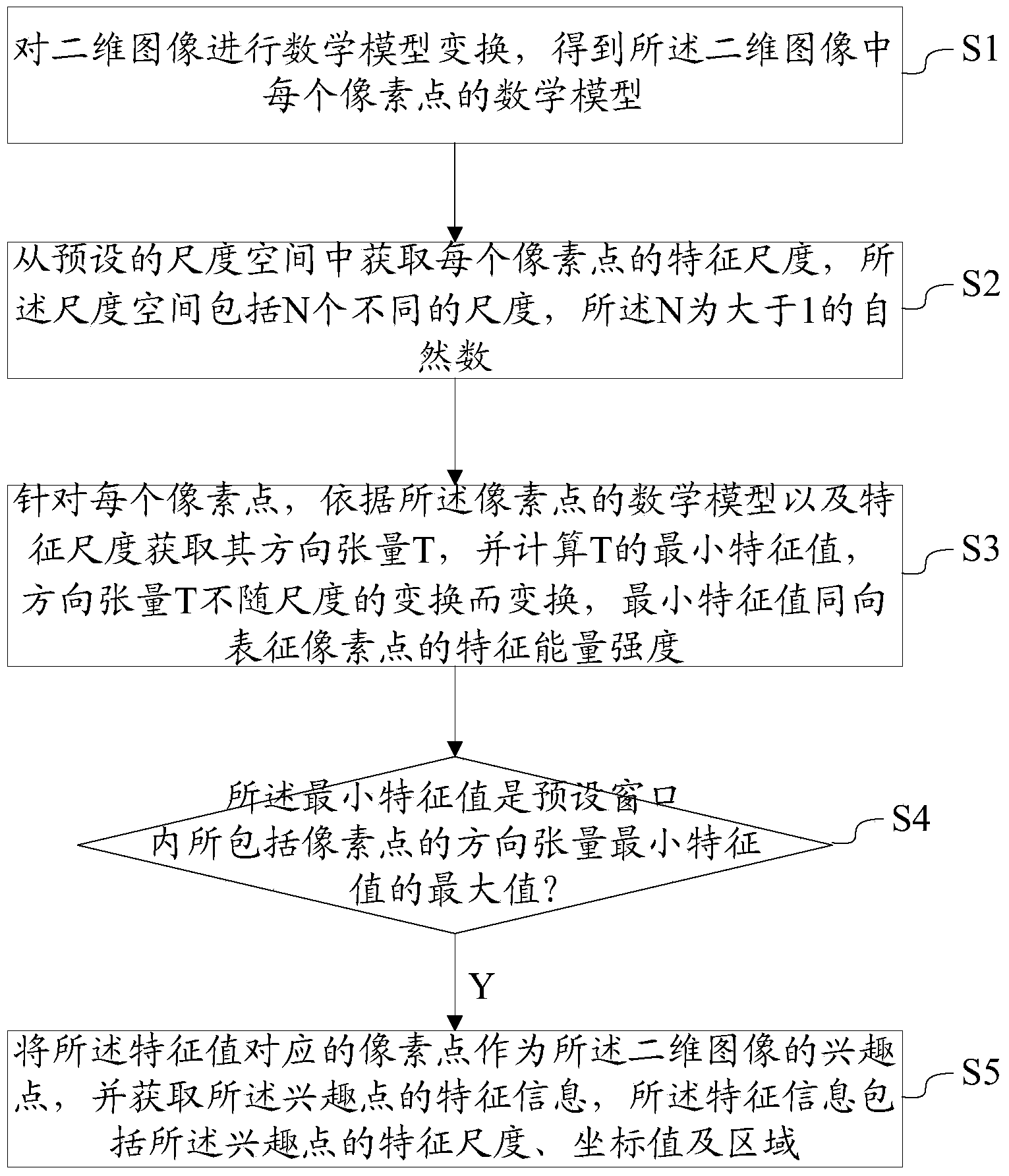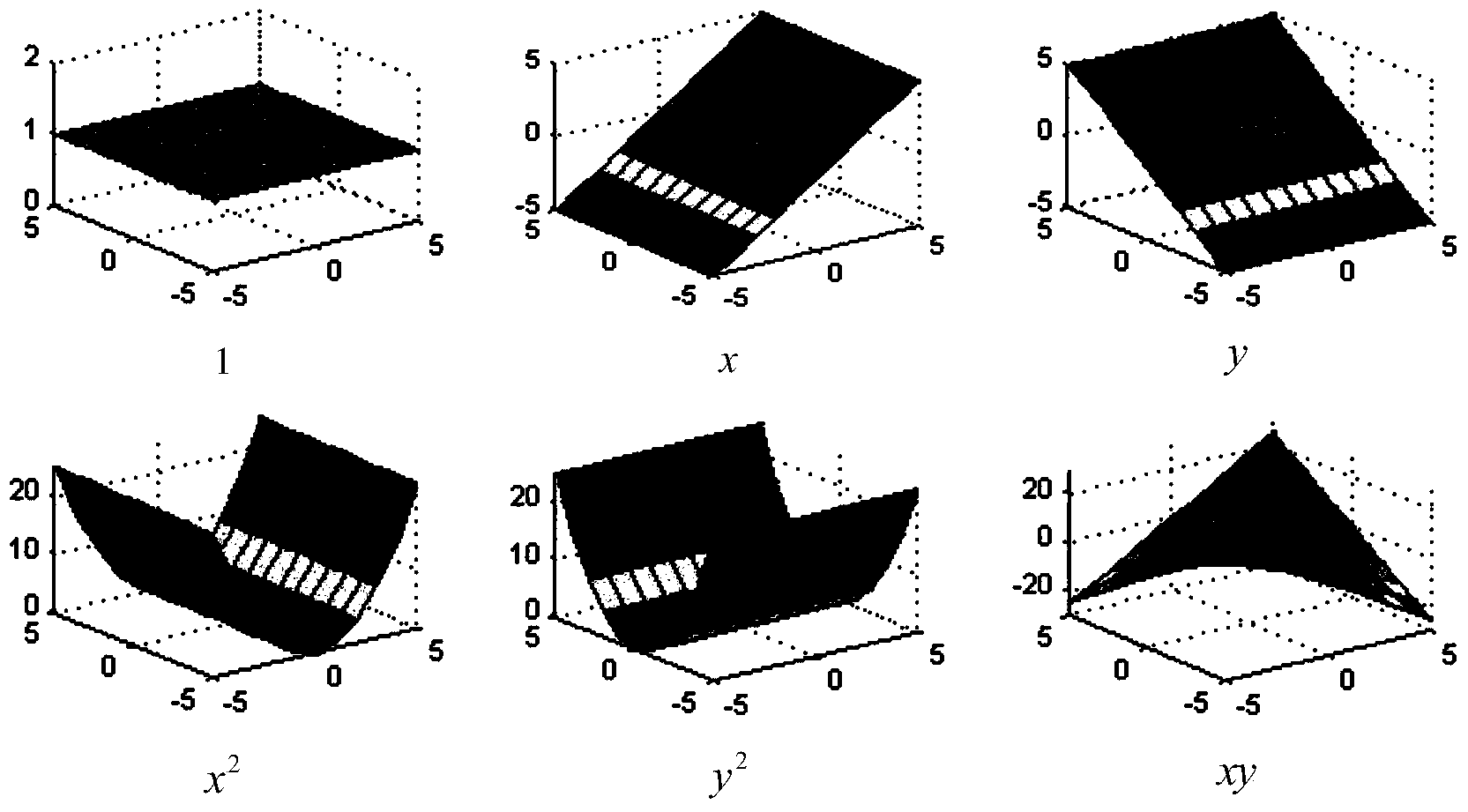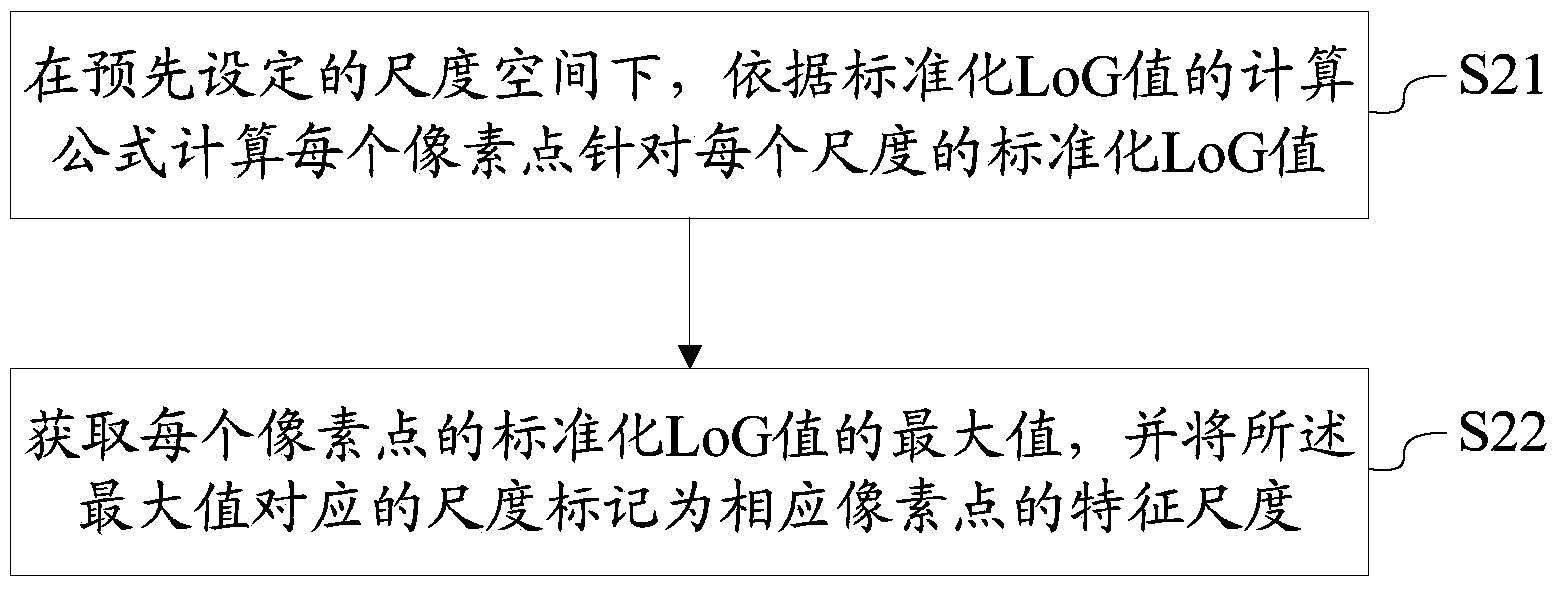Detecting and extracting method and system characterized by image dimension not transforming
A technology of scale-invariant features and extraction methods, applied in character and pattern recognition, instruments, computer parts, etc., can solve the problems of poor robustness, low accuracy and stability, and achieve high accuracy and stability, good robustness
- Summary
- Abstract
- Description
- Claims
- Application Information
AI Technical Summary
Benefits of technology
Problems solved by technology
Method used
Image
Examples
Embodiment 1
[0067] Embodiment 1 of the present invention discloses a method for detecting and extracting image scale-invariant features, please refer to figure 1 , the method includes:
[0068] S1: Perform mathematical model transformation on the two-dimensional image to obtain a mathematical model of each pixel in the two-dimensional image.
[0069] Due to the analysis of the image, the gray value of the image is generally not processed directly, but the image is processed by some mathematical or geometric transformation methods, such as Fourier transform, small filter transform and Gabor filter. Based on this, the present invention assumes that the polynomial coefficients can sufficiently express the local characteristic information of the two-dimensional image, and transforms the image based on the multinomial expansion formula to obtain the mathematical model of the local structural characteristics of the image. Specifically, each pixel of the image is expanded in the form of polynom...
Embodiment 2
[0161] Embodiment 2 of the present invention discloses a detection and extraction system for image scale-invariant features, please refer to Figure 9 , the system includes a mathematical model transformation module 100 , a feature scale acquisition module 200 , a direction tensor acquisition module 300 , a judgment module 400 and an interest point acquisition module 500 .
[0162] The mathematical model conversion module 100 is configured to perform mathematical model conversion on the two-dimensional image to obtain a mathematical model of each pixel in the two-dimensional image.
[0163] The characteristic scale obtaining module 200 is configured to obtain the characteristic scale of each pixel from a preset scale space, the scale space includes N different scales, and N is a natural number greater than 1.
[0164] Wherein, the feature scale acquisition module 200 includes a calculation unit and a feature scale acquisition unit. The calculation unit is used to calculate th...
Embodiment 3
[0189] In the third embodiment, the method of the present invention is evaluated by extracting the points of interest of the actual scene image. Specifically, the repetition rate criterion is used to evaluate the method of the present invention.
[0190] The repetition rate criterion is mainly to evaluate whether the location and scale of the detected and extracted interest points are accurate. For a pair of images, the repetition rate mainly refers to the ratio of the number of repeated interest points determined by the homography matrix in two images with a certain transformation to the total number of interest points in an image with fewer interest points. The two images correspond to the point of interest X a and x b The matching conditions are as follows:
[0191] a. The positioning error of the two images corresponding to the point of interest is less than 1.5 pixel values, namely: ||Xa-HX b ||<1.5.
[0192] Among them, H represents the homography matrix.
[0193] ...
PUM
 Login to View More
Login to View More Abstract
Description
Claims
Application Information
 Login to View More
Login to View More - R&D
- Intellectual Property
- Life Sciences
- Materials
- Tech Scout
- Unparalleled Data Quality
- Higher Quality Content
- 60% Fewer Hallucinations
Browse by: Latest US Patents, China's latest patents, Technical Efficacy Thesaurus, Application Domain, Technology Topic, Popular Technical Reports.
© 2025 PatSnap. All rights reserved.Legal|Privacy policy|Modern Slavery Act Transparency Statement|Sitemap|About US| Contact US: help@patsnap.com



